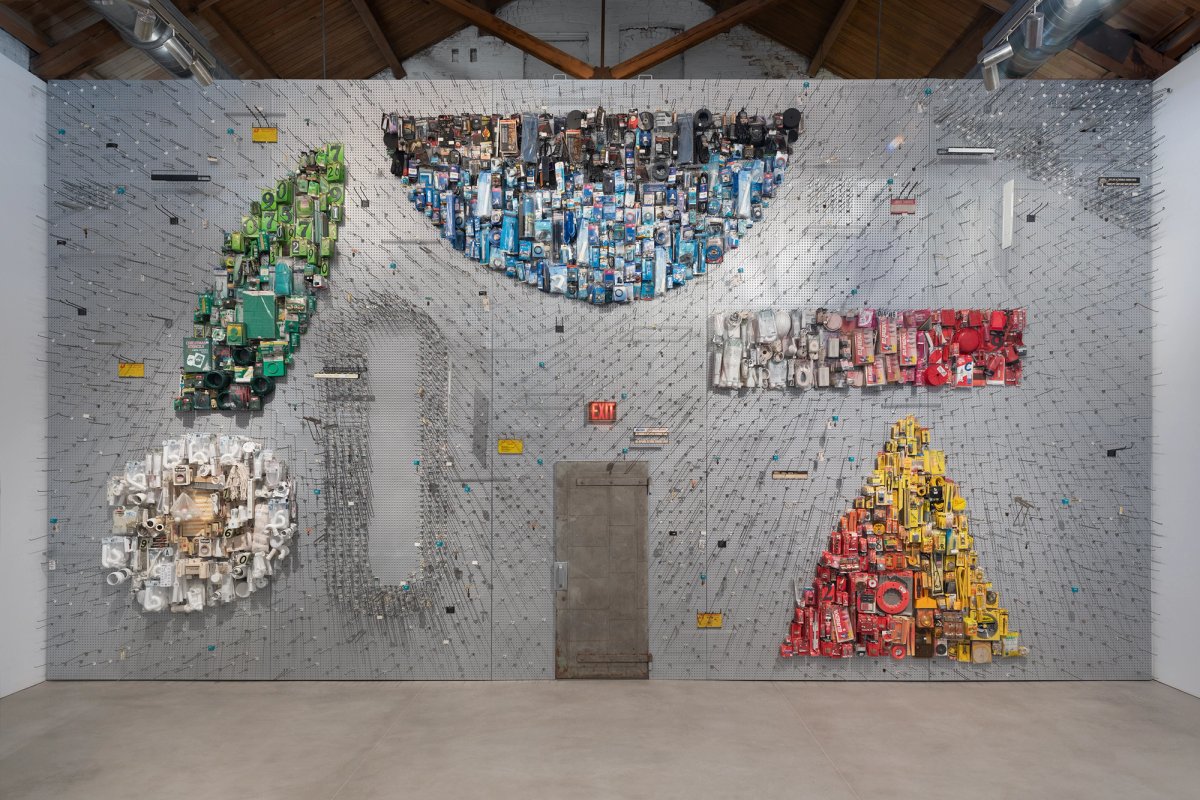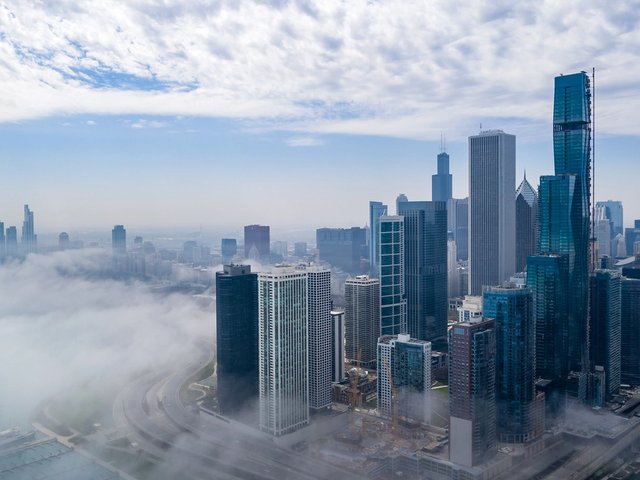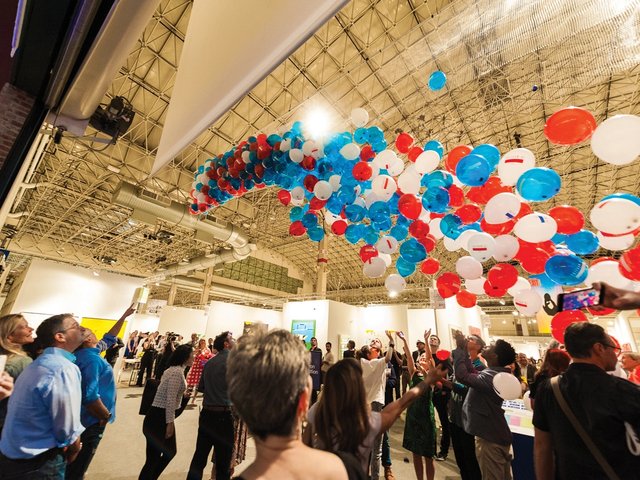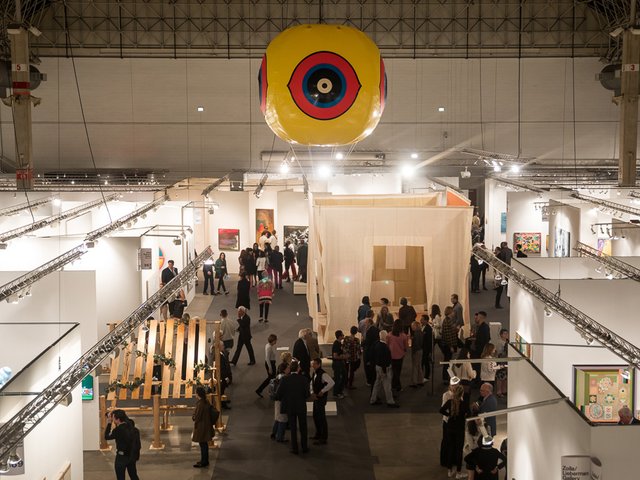Chicago dealers say the Midwestern art capital is undergoing something of a renaissance as events like Expo Chicago raise the profile of the city’s experimental art scene and its connection to other local cultural traditions—like music, architecture and food—both within Chicago and beyond.
The 2023 edition of Expo Chicago, its tenth, will feature stands from more than 170 galleries, the largest number of participants in the fair’s history. (Its predecessor, Art Chicago, drew more than 200 exhibitors at its peak.) Last year’s edition marked Expo’s return to Navy Pier after two years of postponements and virtual programmes due to Covid-19.
Expo will feature stands from familiar galleries including Kavi Gupta, Corbett vs. Dempsey, Monique Meloche, Rhona Hoffman and Gray, which have been mainstays in the Chicago market for decades. But dealers say that a new generation of galleries is exerting its influence in both the local market and the wider culture.
“There’s a movement that’s been happening in Chicago in many cultural circles and is reaching a very nice place within the art world,” says Kavi Gupta, who founded his gallery in 2000. It now has three locations in the city and one in the Lake Michigan beach town of New Buffalo. “There’s a freedom that artists have here that is interesting compared to the very commercialised art markets because here there’s nobody looking over your shoulder.”
Along with the city’s prominent art universities—foremost among them the School of the Art Institute of Chicago—constantly bringing new cohorts of young artists into the local scene, and strong support from Chicago’s many major art institutions, the cultural ecosystem also benefits from a lower cost of living compared with other art hubs like New York and Los Angeles, according to John Corbett, who founded Corbett vs. Dempsey with Jim Dempsey in 2004.
“We have a stellar art scene, architecture, food and theatre—kind of everything that any major city has, except we’re nicer because we’re in the Midwest.”Monique Meloche, gallerist
“There’s more experimentation in Chicago, potentially where there’s less at stake in terms of what might push galleries to be more conservative. So those are all forces and factors that shape the reality of the art scene here,” Corbett says. Dealers say creatives working in Chicago’s art, music, architecture, drama and food industries often influence each other or experiment in other fields, which helps contribute to the city’s cross-disciplinary artistic flavour.
“The more people discover Chicago, the more people want to come back,” says Monique Meloche, who founded her eponymous gallery in 2000 with an exhibition in her Chicago home. “We have a stellar art scene, architecture, food and theatre—kind of everything that any major city has, except we’re nicer because we’re in the Midwest.”
Bullish on experimentation
Local dealers also credit the city’s collector class for its adventurous tastes and being willing to take risks on untested and emerging artists.
“There is a misconception that some of the Midwestern mentality might be a little safer—and that is really not the truth,” Meloche says.
One of the things separating Chicago collectors from their counterparts in other cities is that they are not as trend-driven, says Claire Warner, who co-founded Volume Gallery in 2010 with Sam Vinz. “The work seems more esoteric—a lot of fibre, a lot of clay, a little bit off the beaten path. Chicago has always had a really deep history in that kind of collecting.”

Emanuel Aguilar, who in 2015 opened Patron Gallery with Julia Fischbach in the Noble Square neighbourhood, sees a new generation of collectors who support “in-depth, challenging practices” Courtesy of Patron Gallery
The city also benefits from a new generation of young collectors supporting “in-depth, challenging practices”, says Emanuel Aguilar, who co-founded Patron Gallery in 2015 with Julia Fischbach. “They’re willing to take risks and to really immerse themselves in art and a particular practice in ways that I hadn’t experienced in other cities,” he says.
Expo has had a powerful effect on Chicago’s art market by drawing thousands of visitors to Navy Pier—around 30,000 last year and 38,000 in its last pre-pandemic edition in 2019—and from there encouraging them to explore the city’s galleries. “Ten years ago, we would never have thought a client from out of town would actually fly in regularly for openings,” Meloche says. “Chicago is on the radar and not just once a year, when the art fair comes.”
Emma McKee, the chief of staff at Mariane Ibrahim gallery—which relocated to Chicago from Seattle in 2019—says Chicago still has “an element of surprise” and it is “unexpected how incredible the city is until you really experience it yourself”. She adds, “That’s why Expo is so valuable for the city, because it allows that kind of spontaneous interaction.” The gallery is not taking part in Expo Chicago this year, focusing instead on opening its first solo show with Brooklyn- and Atlanta-based painter Patrick Eugène, who recently joined the gallery’s roster, at its main space in West Town.
Among the first-time Expo participants is Anthony Gallery, owned by Isimeme “Easy” Otabor, a Chicago native who was an influential figure in streetwear and music before opening the gallery in 2019. The gallery focuses on contemporary artists and bridging the gap between art and other industries to foster more inclusivity.
Anthony Gallery’s stand will feature a solo presentation by Henry Swanson, whose work is inspired by cartoons, comics and his childhood growing up in Dallas. In the same week as the fair, the gallery will open a large new space in Chicago’s West Loop, inaugurating it with a solo show of the Japanese artist En Iwamura’s playful, bulbous sculptures.
A Covid bump
The Chicago art market has largely bounced back from Covid-19 pandemic closures, according to local dealers who say that they already conducted much of their business online with customers located outside the city; the time people spent inside their homes may have actually encouraged them to buy more art and pushed residents to take more of an interest in local galleries.

An installation of Maia Cruz Palileo's work at Monique Meloche gallery Photo: Daniel Stephen Miller
“Covid was a real kind of growth moment for a lot of galleries in Chicago; during Covid we had some of our busiest openings,” Warner says. “Life kind of slowed down and people were using art and going to galleries in Chicago more as a source of entertainment or a source of connecting with the local art scene in a way that they hadn’t before.”
Warner says she saw “a huge movement of people” relocating from the city to either their second homes or buying property outside Chicago. Volume had to develop new shipping lines to places like Aspen and the Hamptons, as opposed to its typical pre-pandemic shipments to New York or Los Angeles.
While some galleries closed permanently during the Covid-19 lockdowns, many Chicago spaces managed to pivot and stay open. “I think people hunker down and figure out a way through it,” Dempsey says. “If you happened to have had a full tank of gas when that hit, you could still do a little bit of driving. Folks who were looking for a gas station were the ones that probably had a really tough go of it.”
Correction: An earlier version of this story incorrectly attributed a quote. It has been revised accordingly.






